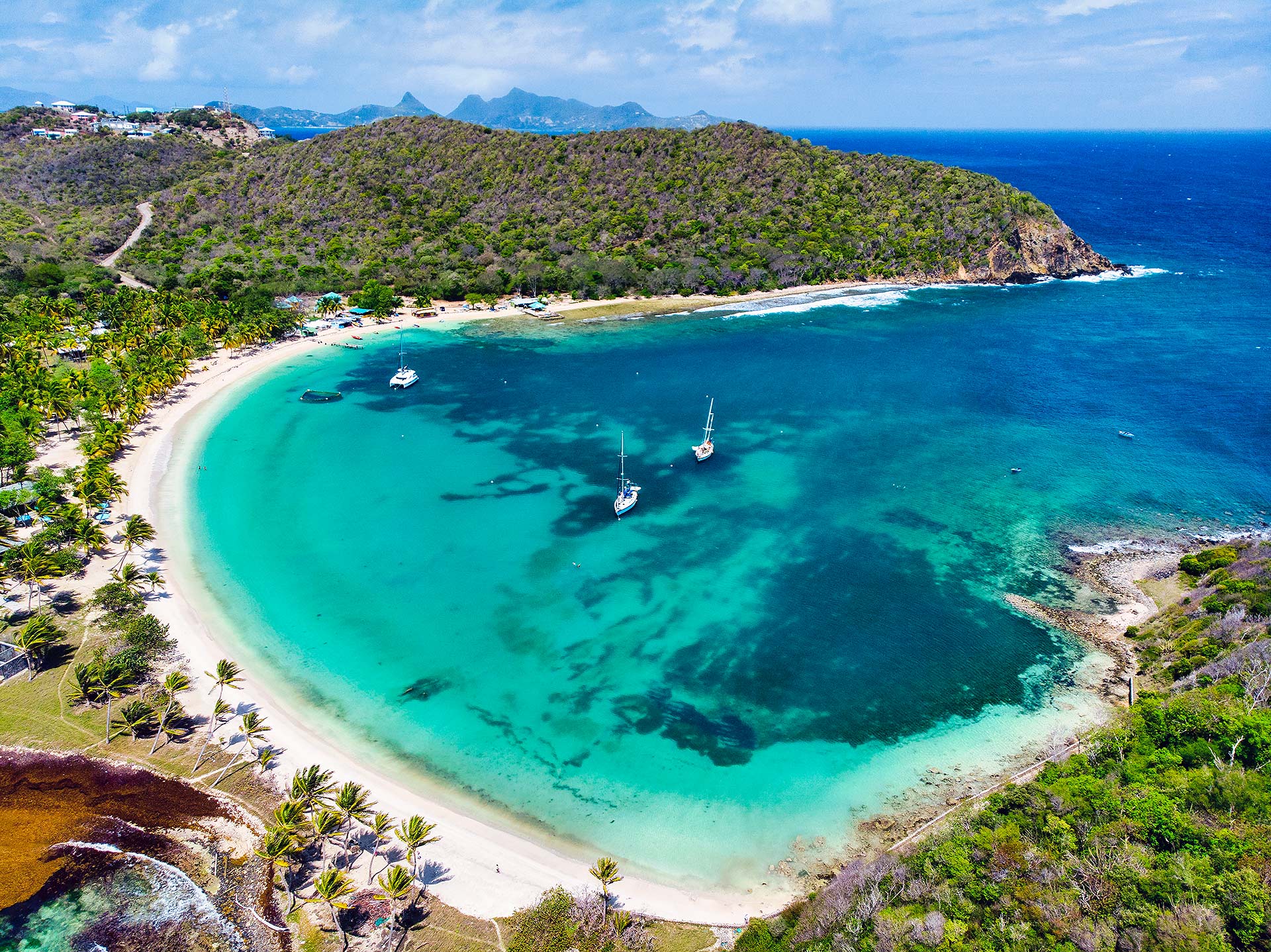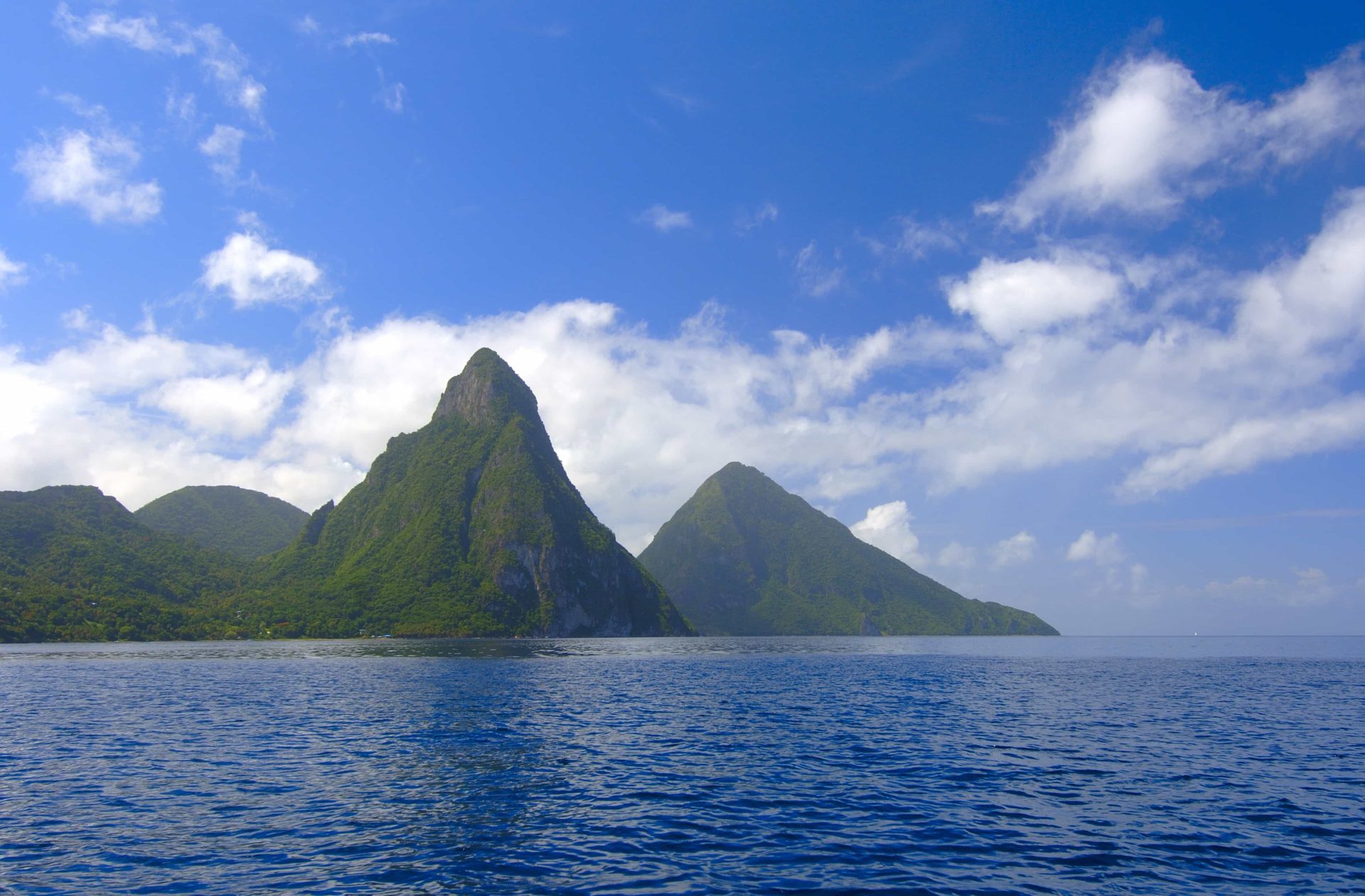Geography and Demographics: Windward Islands

The Windward Islands, located in the eastern Caribbean Sea, form an archipelago that stretches from Dominica in the north to Grenada in the south. These islands are characterized by their mountainous terrain, lush tropical rainforests, and stunning coastlines. The climate is tropical, with warm temperatures and abundant rainfall throughout the year.
Terrain and Climate
The Windward Islands are primarily composed of volcanic mountains, with the highest peak being Mount Diablotin on Dominica, reaching an elevation of 1,447 meters. The terrain is rugged and mountainous, with deep valleys and steep slopes. The islands are covered in lush tropical rainforests, which are home to a diverse array of flora and fauna. The climate is tropical, with average temperatures ranging from 24 to 29 degrees Celsius throughout the year. Rainfall is abundant, with the wet season typically lasting from June to December.
Population and Culture
The Windward Islands have a total population of approximately 600,000 people. The majority of the population is of African descent, with significant European and East Indian minorities. The islands have a rich cultural heritage, influenced by a blend of African, European, and Caribbean traditions. The people of the Windward Islands are known for their vibrant music, dance, and storytelling traditions.
Tourism and Economic Development
:max_bytes(150000):strip_icc()/aerial-shot-of-cruz-bay-st-john-in-us-virgin-islands-165581255-58dea04e3df78c5162cf9584.jpg)
Tourism plays a pivotal role in the economic development of the Windward Islands. The region boasts a plethora of stunning beaches, lush rainforests, and vibrant coral reefs that attract tourists from around the globe.
The economic benefits of tourism are manifold. It creates jobs in the hospitality, transportation, and retail sectors. It also generates foreign exchange, which can be used to invest in infrastructure and other development projects.
Major Tourist Attractions, Windward islands
- The Pitons (St. Lucia): Two iconic volcanic peaks that rise majestically from the sea.
- Rodney Bay (St. Lucia): A picturesque bay with a lively marina, restaurants, and shops.
- Soufrière Hills Volcano (Montserrat): An active volcano that offers stunning views of the surrounding landscape.
- Carriacou (Grenada): A charming island with beautiful beaches, hiking trails, and a rich cultural heritage.
Challenges and Opportunities for Sustainable Tourism Development
While tourism is a major economic driver, it also poses challenges to the environment and local communities. The region must find ways to develop tourism sustainably, so that it can continue to benefit the local economy without damaging the natural and cultural resources of the islands.
One of the biggest challenges is managing the number of tourists. The Windward Islands are a popular destination for cruise ships, which can bring thousands of visitors to the islands at once. This can put a strain on infrastructure and resources, and can also lead to environmental degradation.
Another challenge is ensuring that tourism benefits the local community. Too often, the profits from tourism go to large corporations, while the local people see little benefit. It is important to develop tourism initiatives that are community-based and that provide economic opportunities for local residents.
Despite the challenges, there are also opportunities for sustainable tourism development in the Windward Islands. The region has a unique natural and cultural heritage that can be marketed to tourists who are looking for authentic experiences.
The Windward Islands can also develop ecotourism initiatives that promote conservation and protect the environment. This type of tourism can provide economic benefits while also raising awareness of the importance of protecting the region’s natural resources.
History and Cultural Significance

The Windward Islands possess a rich tapestry of history and culture, shaped by diverse influences over centuries.
Pre-Colonial Period
Prior to European arrival, the Windward Islands were inhabited by indigenous peoples, including the Arawak and Carib. These communities had their own distinct languages, traditions, and social structures.
Colonial Period
European powers, particularly France and England, colonized the Windward Islands from the 17th century onward. The colonial era brought significant changes, including the introduction of plantations, slavery, and new political systems. The influence of European powers is evident in the region’s architecture, language, and legal systems.
Post-Colonial Period
The Windward Islands gained independence from their colonial rulers in the 20th century. Since then, they have faced challenges such as economic development, social inequality, and natural disasters. Despite these challenges, the region has also experienced cultural and political progress.
Cultural Significance
The Windward Islands are renowned for their vibrant music, art, and folklore. The region’s musical traditions include calypso, soca, and reggae, which have gained international recognition. The islands are also home to a rich tradition of storytelling, dance, and crafts.
Di Windward Islands deya get some serious weather sometimes. From hurricanes to tropical storms, deya does get plenty of it. But don’t worry, meteorologists does use something called “spaghetti models” to try to predict where these storms going to go.
You can check out the spaghetti models for beryl to see what they saying about the next storm. So, if you living in the Windward Islands, make sure you stay up-to-date on the latest spaghetti models so you can be prepared for whatever the weather brings.
The Windward Islands, a chain of islands in the Caribbean, are often threatened by hurricanes. To track these storms, meteorologists use hurricane spaghetti models, which are computer simulations that predict the path of a hurricane. Hurricane Beryl spaghetti models are particularly useful for predicting the path of hurricanes that are approaching the Windward Islands.